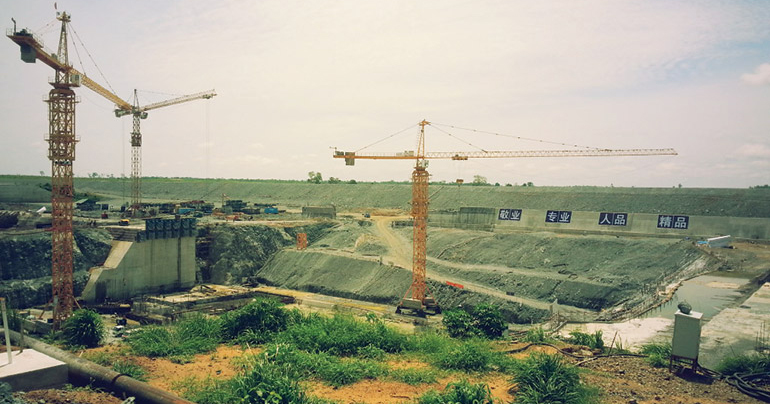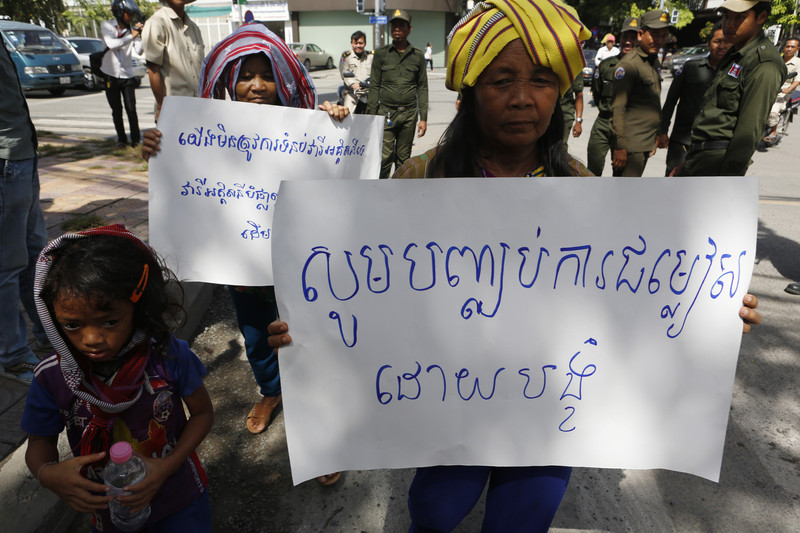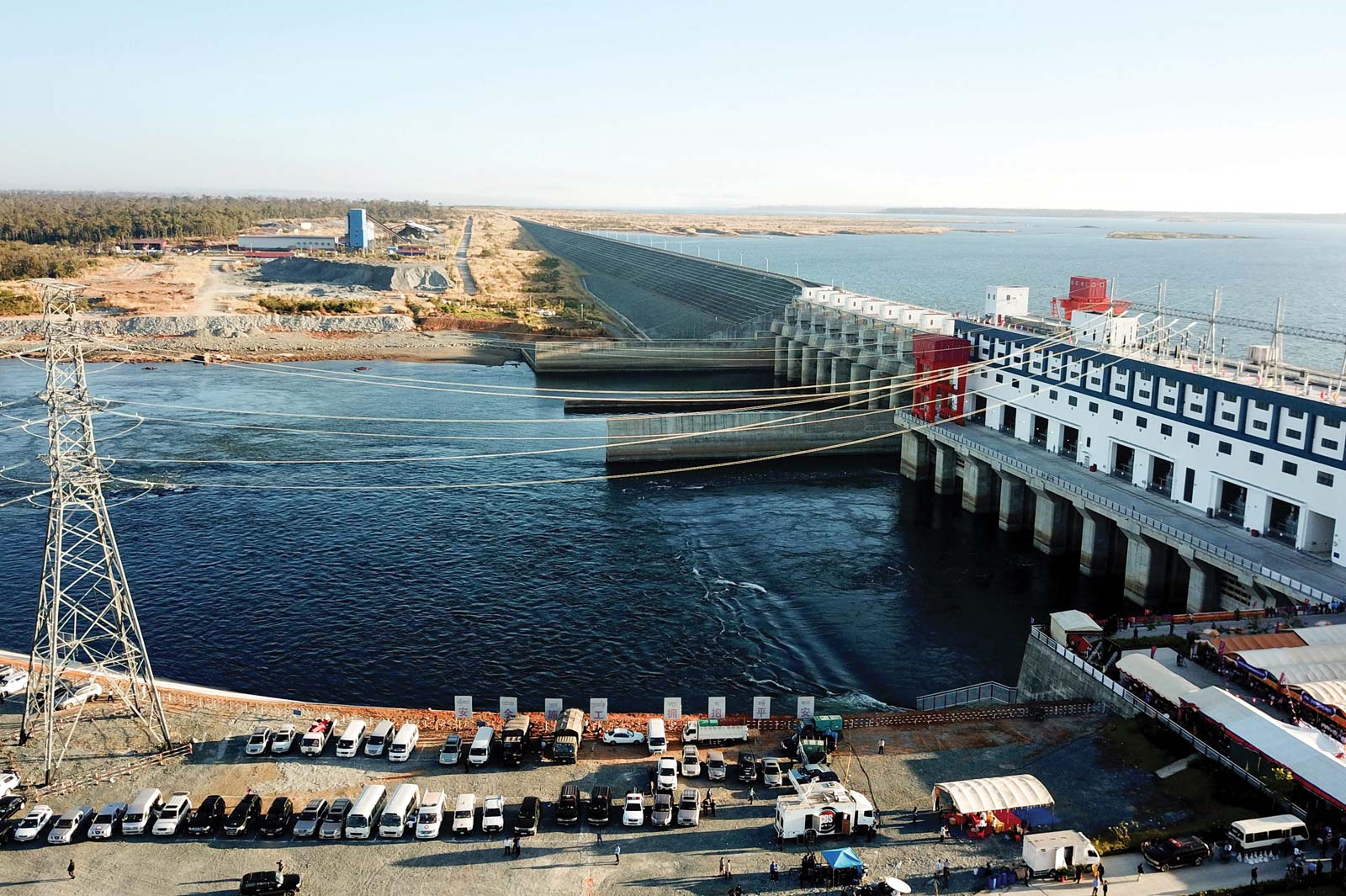Perched at the confluence of the Sesan and Srepok rivers in Cambodia’s northwest Stung Treng province – part of the 3S River System near the Cambodian-Laos border – the nearly $800 million Lower Sesan II Dam (LS2) marked its two-year anniversary last week.
But two years on, we are losing sight of the benefits promised prior to the hydropower dam’s construction, with public attention and media coverage moving on. The dam itself is not necessarily a problem, but crucial to whether it becomes a problem is its impact on the environment and local people, and whether the initially promised benefits are kept in the coming years.
It should be noted, however, that when it comes to its impact, on people and the environment, the dam has a longer legacy, taking into account the four years of construction and resettlement phases. The 2017 flood in Srekor and Kbal Romeas villages is a good example of this, when an estimated 180 families refused to leave their homes as dam tests were set to cause major flooding.
The dam was first proposed by Asian Development Bank (ADB) in the 1990s to promote Cambodia’s hydropower potential, but dropped off when their 1999 report found the dam’s potential repercussions outweighed the benefits. But the Cambodian government in 2007 proceeded with the project with the support of Vietnam’s EVN International Joint Stock Company. In 2012, the dam became a joint venture between Cambodia’s Royal Group and China’s Hydrolancang International Energy, while Vietnam retains only a small stake. Construction began in 2014 and finished in 2018.
According to the Law on Cambodian Government Guarantee of Payments to Hydropower Lower Sesan 2 Company, there are a wide array of promised benefits from LS2 dam.
First, the project promised greater power independence and energy security, allowing Cambodia to rely less on high-cost fuel and a long-term fixed price of power. Authorities responsible for the dam also promised that the project would reduce poverty and create thousands of job opportunities. These employees were promised that they would gain valuable experience and skills with new technology. LS2 also pledged to provide the affected people with decent, orderly housing, sufficient infrastructure – roads, schools, health centres, water supply systems – as well as modern irrigation.
The LS2 company also promised $500,000 per annum to Electricite du Cambodge towards training and human resource development, totalling $20 million, for the 40-year concession. Then, once the operation begins, the government is expected to earn an average of $29.5 million per annum from electricity sales, excluding VAT. Lastly, the government will receive an additional $13.5 million per annum if VAT is levied.
Looking back, is it possible to get a clear sense of whether the dam has, as yet, delivered on these promises, not only for the local people who gave up their ancestral land, but for all Cambodian citizens?

Two years after the dam officially began operating, its benefits remain highly contested. Take the question of the rewards reaped by local people, for example.
The LS2 law promised five hectares of agricultural land and 5,000 metres squared (50 x 100 m) of community residential land. In June this year, the compensation listed under the LS2 law was almost 100% complete with only a few families left to deal with, claimed the governor of Stung Treng Province Mom Saroeun.
“Resettlement of local people went well overall, even though there is resistance by several families,” said Dr Keo Piseth, director of Centre for Sustainable Development Studies at the Asian Vision Institute.
Despite this, whether the community has been given everything promised by LS2 remains questionable, with diverging claims depending on who you ask.
Villagers complain that there is a lack of basic infrastructure and job opportunities. This new village is also cut off from the river, their primary source of fish
A certain government-friendly outlet claimed last month that the 500 households resettled to Srel Kor Thmey villagers have been given high-quality roads, drainage systems, clean water, cheap electricity, schools and hospitals. Conversely, more scrutinising sources provide an arguably more complete picture of how the dam has adversely affected villagers’ lives.
The relocated families of the Srel Kor Thmey village assert that the company did not build a bridge across the Sesan River as promised before relocating them from their home villages. Therefore, they need to travel kilometres through a bypath. Villagers complain that there is a lack of basic infrastructure and job opportunities. This new village is also cut off from the river, their primary source of fish.
It is this final complaint, access to fish, that remains a major point of contention with the LS2 dam. The China Huaneng Group claimed to invest $1.5 million to build a fish ladder – a fish step engineered to facilitate fish migration overcoming the barriers caused by dams. However, a 2012 study warned of a 9.3% drop in fish stocks across the basin, the main protein consumption of Sesan villagers.
No study has been conducted gauging the LS2 dam’s impact on fisheries since the 2012 report, Dr Chheng Phen, an Acting Director of Inland Fisheries Research and Development Institute, told the Globe.
”There is no study related to impact of Dam at Sesan river after this 2012 study, and it was only a model prediction. The dam has its own Environmental Impact Assessment which shows much less impact on the environment [than the 2012 prediction], and it was approved by the Ministry of Environment of Cambodia,” he said.
Dr Keo Piseth added that during his field visit, although there was a decline in certain fish species, thousands of birds came to the dam because it has more abundant water and food.
Perhaps not surprisingly, the impact on fisheries after the dam began operating is not statistically provided in a longitudinal way to confirm previous studies and warnings about dropping fish populations.

Proponents of the dam have argued that the dam will bring technological advancement that will help local people gain experience and opportunities. But these claims remain dubious.
Of the 3,000 people that might have been engaged in the dam’s construction, many would have required certain engineering skills and technical expertise. Approximately, 29,000 indigenous people living along the Sesan River in Cambodia are highly skilled when it comes to agriculture and forestry, but they lack training when it comes to engineering. It’s likely few of them would have found meaningful job opportunities during the dam’s construction, so the claims of reducing local poverty appear to lack credibility, or at least need verification.
In terms of finances, information regarding government revenue from LS2 is not open to the public, and so after two years, whether these promises have been kept is questionable. Nothing of this is new – the lack of data in Cambodia is a perennial problem that we face.
But while livelihoods seem to have been hurt, fish stocks suspected lowered, and questions over jobs and finances remain, has the dam at least completed its primary goal of providing electricity? It would seem, according to the government at least, that it has.
In October 2018, the totalled installed capacity of 400,000 kilowatts accounts for 20% of Cambodia national’s installed power generation capacity. In July, the Ratanakiri Provincial Hall Administration director Neang Sam Ath claimed that 206,000 people would benefit from the 50 MW of electricity provided by Lower Sesan dam II. The LS2 dam has generated its full capacity of 400 MW as promised, and provides power to Stung Treng, Preah Vihear and Ratanakiri, and Mondulkiri provinces, wrote Dr Keo Piseth.
He added that “a representative of the company mentioned that drought and floods have not yet affected power generation.”
Regardless, many important questions remain unanswered: How much has LS2 contributed to poverty reduction and job creation? How much have the families got in promised compensation? How much has the government earned?
Much like a connect the dots picture, all this missing information hinders us in drawing a picture of what we need to fully understand the costs and benefits of this dam. Data and evidence is still needed to fill in the missing pieces.
Horn Chanvoitey is a Junior Research Fellow at Future Forum, an independent Cambodia-based public policy think-tank.


